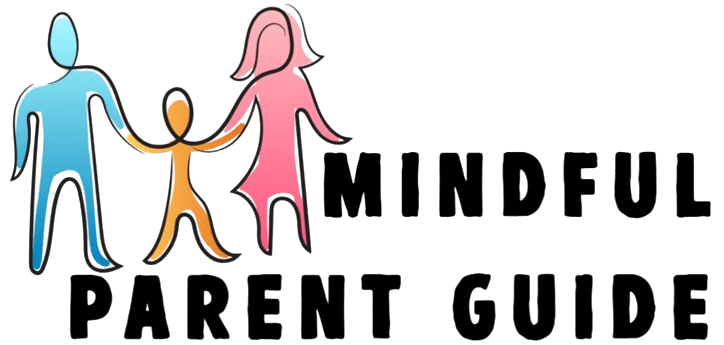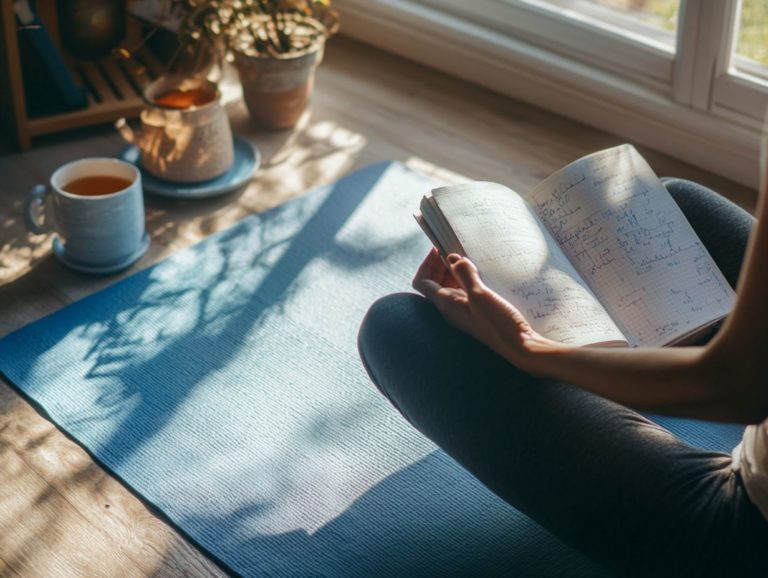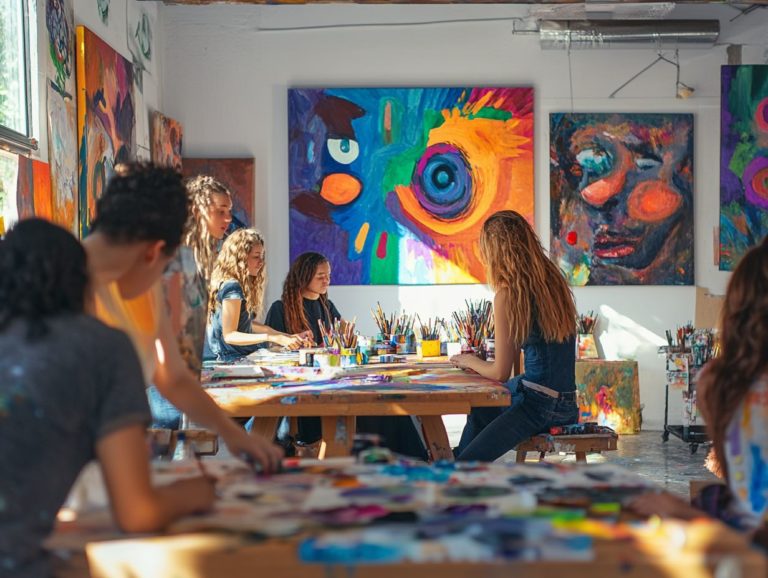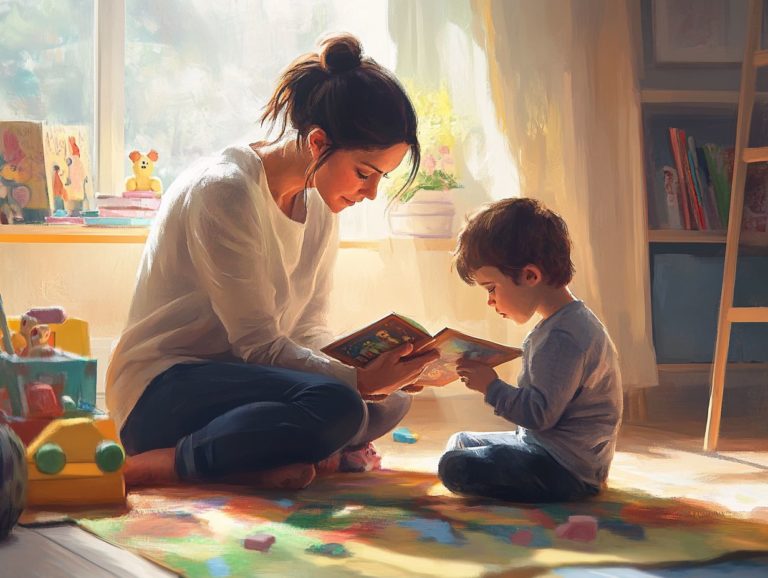5 Creative Outlets for Emotional Awareness
In today s fast-paced world, you might find that connecting with your emotions feels like a formidable challenge. However, creative outlets such as writing, painting, music, dance, and photography offer not just an escape but also serve as powerful tools for enhancing your emotional awareness and self-expression. These activities can also promote emotional release and healthy coping strategies.
This article delves into how these diverse forms of creativity can deepen your understanding of yourself, promote healing, and encourage self-discovery. It provides practical tips for seamlessly incorporating these creative practices into your daily routine while addressing common misconceptions about their significance in emotional well-being and mental health.
Embrace creativity and watch as it transforms your emotional landscape, enriching your life beyond measure.
Contents
- Key Takeaways:
- 1. Writing/Journaling
- 2. Painting and Drawing
- 3. Music
- 4. Dance/Movement
- 5. Photography
- How Can Creative Outlets Help with Emotional Awareness?
- What Are the Benefits of Using Creative Outlets for Emotional Expression?
- How Can One Incorporate Creative Outlets into Their Daily Routine?
- What Are Some Tips for Using Creative Outlets for Emotional Awareness?
- How Can Creative Outlets Be Used for Self-Discovery and Healing?
- What Are Some Common Misconceptions About Creative Outlets for Emotional Awareness?
- Frequently Asked Questions
- Exploring Creative Outlets for Emotional Awareness
- How can creative outlets help with emotional awareness?
- Are there any specific benefits to using creative outlets for emotional awareness?
- Do I need to have any specific skills to use creative outlets for emotional awareness?
- Can I use more than one creative outlet for emotional awareness?
- Do I need to dedicate a lot of time to using creative outlets for emotional awareness?
Key Takeaways:
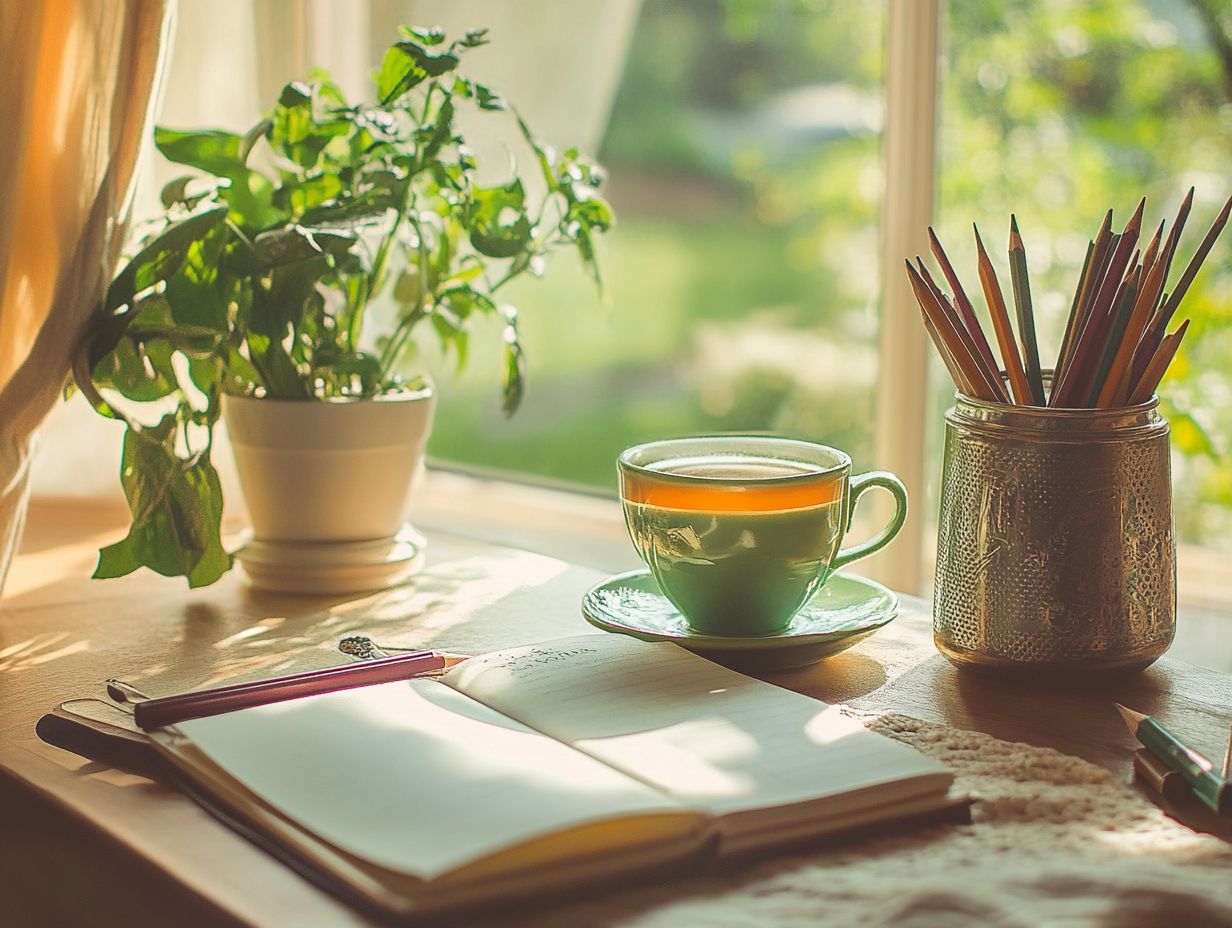
- Engaging in creative activities, such as writing or painting, can help improve emotional awareness and self-expression.
- Incorporating creative outlets into daily routines can provide numerous benefits, including stress relief, self-discovery, and personal growth.
- It’s important to find creative activities that resonate with you and to approach them with an open and non-judgmental mindset in order to fully experience the emotional and therapeutic benefits.
1. Writing/Journaling
Writing and journaling can be seen as powerful forms of cognitive therapy, allowing you to untangle complex feelings and find innovative solutions to emotional challenges.
Writing and journaling are powerful creative outlets that can significantly enhance your emotional well-being by fostering self-expression and facilitating emotional healing. When you engage in regular journaling, you open the door to therapeutic benefits, especially if you’re grappling with mental health challenges like anxiety or depression. Using journaling prompts can also help guide your writing process.
The structured act of writing allows you to explore your thoughts, feelings, and experiences more deeply, promoting self-reflection and understanding. This practice can bolster your problem-solving skills and coping strategies, paving the way for personal growth and emotional resilience. Writing can also serve as a distraction technique to manage stress and anxiety.
Different journaling techniques can amplify these benefits remarkably. For instance, bullet journaling enables you to organize your thoughts and tasks, granting you a sense of control over your daily life. Gratitude journaling helps shift your focus to positive experiences, nurturing a more optimistic mindset. Meanwhile, using prompts can unlock hidden emotions and spark thoughtful introspection.
By incorporating these methods into your routine, you can effectively manage anxiety while cultivating self-esteem as you document your personal achievements and affirmations. Ultimately, this leads to a greater sense of self-awareness and emotional balance. The creative journey of writing can significantly enhance your mental health.
2. Painting and Drawing
Painting and drawing are essential components of your creative journey toward emotional well-being. They offer vibrant forms of expression that elevate your artistic abilities and serve as effective stress relief techniques.
These artistic pursuits allow you to channel your emotions through the visual arts, encouraging an emotional release that can aid in managing anxiety and depression. Whether you choose to create abstract art or intricate sketches, painting and drawing give you the freedom to express yourself creatively.
Engaging in these activities can cultivate a profound sense of creative freedom, offering a therapeutic outlet for your feelings. They can also serve as distraction techniques, helping you focus on positive emotions and creative expression.
By exploring various styles such as impressionism, realism, or surrealism, you can deepen your artistic experience. Each technique presents unique opportunities to depict your thoughts and emotions. The act of creating art fosters a sense of accomplishment and significantly uplifts your mood, ultimately enhancing your overall well-being and contributing to your personal fulfillment and confidence.
The freedom to experiment without fear of judgment paves the way for personal exploration, allowing you to express your innermost feelings without restraint. This process is crucial in enhancing your emotional resilience.
This creative process provides a comforting escape and leads to personal fulfillment, highlighting how embracing artistic endeavors can profoundly impact your emotional landscape.
3. Music
Music therapy and other musical activities are integral to fostering mental well-being. Music, as a profound form of expression, plays an essential role in enhancing your mental well-being and offers therapeutic benefits through music therapy and emotional release.
Engaging with music whether through listening or creating can become a powerful coping strategy for managing stress and anxiety. It also promotes relaxation techniques that nurture emotional healing. By exploring various genres and styles, you can delve into your feelings, leading to improved emotional resilience and self-expression.
The impact of music on your emotional health is remarkable. Different types of music can evoke a spectrum of emotions, from pure joy to deep nostalgia. Fast-paced rhythms ignite exhilarating energy, while soothing melodies foster tranquility and help alleviate tension.
In therapeutic settings, professionals harness the power of music therapy to assist individuals in expressing emotions they might find difficult to articulate. This approach enhances self-awareness and encourages a deeper understanding of your emotions. Engaging with music can serve not only as a means of escapism but also as a valuable tool for confronting and processing complex feelings. Participating in community support groups focused on musical activities can further augment these benefits.
4. Dance/Movement
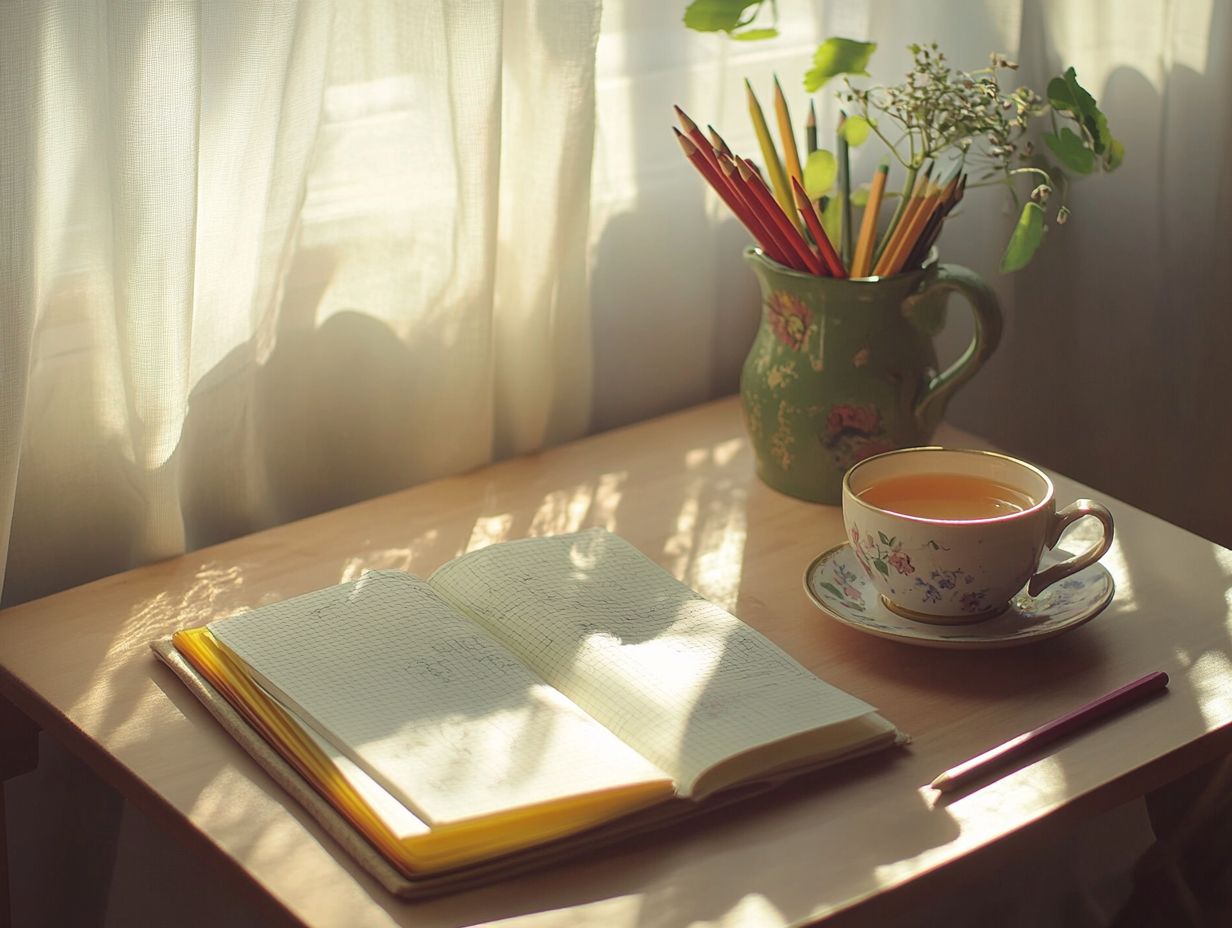
Dance therapy integrates movement with emotional exploration, creating a dynamic pathway to mental well-being. This form of cognitive therapy enhances your emotional awareness and promotes personal growth.
Engaging in dance and movement offers vibrant avenues for stress relief and powerful self-expression through your body. By participating in dance therapy, you can experience a profound emotional release that nurtures personal growth and mental well-being.
The act of moving enhances self-esteem and sparks creativity, allowing you to explore your feelings and thoughts in innovative ways. This sets the stage for emotional healing and resilience.
Whether it s ballet, hip-hop, or contemporary styles, each form of dance provides a unique pathway to connect with your emotions. These experiences foster a deeper sense of mindfulness, as you become attuned to your body, the rhythm of the music, and the fluidity of your movements.
Incorporating relaxation techniques within your dance practice elevates your emotional health by fostering calm and helping to release tension. As you immerse yourself in dance, you discover joy and cultivate coping strategies that contribute to a balanced emotional life.
Each dance session is a step toward greater self-discovery and critical thinking about your emotional well-being.
5. Photography
Photography offers a unique form of self-expression and emotional exploration. This captivating artistic pursuit invites you to express yourself and explore your emotions creatively.
As a powerful medium, photography encourages self-discovery and enhances your emotional awareness, promoting personal fulfillment. This practice exemplifies how artistic pursuits can improve mental well-being.
Engaging in photography provides a wonderful distraction from daily stressors. It offers an outlet for emotional release that fosters positivity and contributes to your overall mental health.
When focusing on the intricate details of a subject be it a vibrant flower, a bustling cityscape, or fleeting moments of everyday life you cultivate mindfulness and ground yourself in the present moment. Experimenting with framing, lighting, and composition not only elevates the artistic quality of your images but also deepens your connection to your experience.
This reflective practice encourages you to slow down, observe your surroundings, and capture moments that resonate with your emotional state. Ultimately, this leads to greater self-awareness and personal growth.
How Can Creative Outlets Help with Emotional Awareness?
Engaging in creative processes like cooking, model-making, and theater arts contributes to emotional awareness.
Creative outlets such as writing, painting, and music offer profound opportunities to enhance your emotional awareness. They allow you to explore and articulate feelings in unique ways, serving as powerful coping strategies that significantly bolster your mental health.
For example, art therapy a form of therapy that uses creative processes like painting or drawing encourages self-discovery. Creating a painting or sculpture can unearth deeper thoughts and feelings that may be hard to express with words. Similarly, music therapy offers benefits through writing lyrics or participating in group drumming sessions that elevate self-esteem through shared rhythm and connection.
These activities promote self-reflection and nurture community support. They bring people together in shared experiences, fostering a profound sense of belonging within a vibrant community. Group activities like cooking or theater arts further enhance this sense of connection.
What Are the Benefits of Using Creative Outlets for Emotional Expression?
Engaging in creative outlets like gardening or crafting contributes to emotional expression and mental well-being.
Creative outlets provide numerous benefits. These include enhanced mental well-being and improved emotional resilience. They also help you articulate your complex feelings. When you engage in therapeutic activities like art, music, or writing, you open the door to significant emotional release. This paves the way for overall healing and self-discovery.
These creative processes encourage you to confront and navigate your emotions. They foster both personal growth and a deeper understanding of your mental health. Activities like gardening, cooking, baking, and model-making can also be powerful avenues for emotional exploration and stress relief.
Research from the American Journal of Public Health shows that engaging in creative pursuits boosts self-esteem, vital for developing a positive self-image. Experts emphasize these creative activities significantly reduce stress levels, providing a much-needed escape from daily pressures. Artistic expression enables you to process and manage your feelings more effectively, enhancing emotional regulation. Community support and problem-solving skills improve through these artistic activities.
By immersing yourself in these outlets, you cultivate a sense of control and autonomy over your emotional experiences. Such experiences contribute to personal growth and self-discovery.
How Can One Incorporate Creative Outlets into Their Daily Routine?
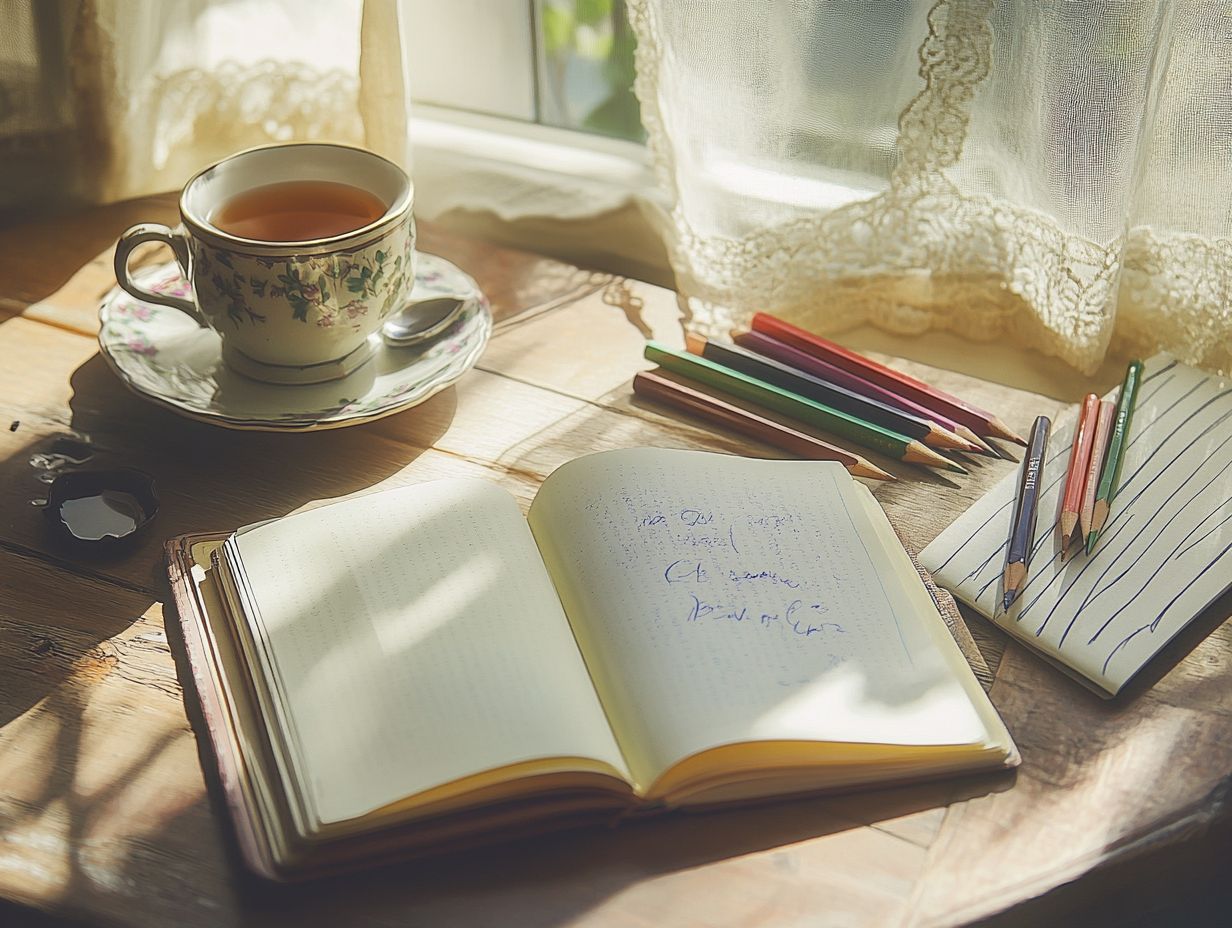
Incorporating creative outlets into your daily routine can be transformative. It fosters emotional well-being and enhances self-expression through enjoyable activities. Simple adjustments, like carving out time for painting, journaling, or music therapy, can lead to remarkable improvements in your mental health.
By prioritizing these creative processes, you cultivate mindfulness. Ensure you engage consistently in activities that promote relaxation and emotional healing, including mindfulness practice and relaxation techniques.
To make this integration seamless, consider block scheduling in your planner. Dedicate specific time slots to your creative pursuits. A 15-minute morning sketching session or an evening journaling ritual could be just what you need to reset your mind.
Using journaling prompts can help guide your self-expression and emotional awareness during these sessions. Approach these activities with an open heart and mind. Allow yourself to flow with creativity rather than striving for perfection.
Mixing up your creative activities keeps your interest alive and motivation high. You might explore photography, crafting, dance therapy, gardening, or model-making.
Regularity is key. Set monthly goals that encourage you to embrace your creative side. This way, you ll nurture your passion and enhance your mental wellness journey, leading to personal fulfillment and positive emotions.
What Are Some Tips for Using Creative Outlets for Emotional Awareness?
To truly harness creative outlets for enhancing your emotional awareness, consider adopting several practical tips that amplify the benefits of art. Engaging with creativity regularly, combined with relaxation techniques like deep breathing, can foster an environment ripe for emotional exploration and anxiety management.
Delving into various forms of art such as journaling, painting, or music therapy enables a broader spectrum of emotional expression and encourages deeper self-reflection.
Setting aside dedicated times each week for these creative pursuits can significantly bolster your commitment and lead to more profound insights. Don’t hesitate to experiment with different styles and techniques; this exploration can unlock unexpected emotions and perspectives, enriching your creative journey. Such creative freedom can also enhance problem-solving skills and critical thinking.
Embracing imperfections is vital. Recognizing that there s no right or wrong in art brings a liberating sense of freedom to your expression. This mindset nurtures a playful spirit and alleviates the pressure of achieving perfection, allowing you to connect with your feelings in a more authentic way.
How Can Creative Outlets Be Used for Self-Discovery and Healing?
Creative outlets offer you an important way to learn about yourself, allowing you to delve into your innermost thoughts and emotions through various forms of artistic expression. Engaging in activities like painting, writing, or playing music can unveil hidden aspects of yourself, contributing significantly to emotional healing and personal transformation.
By embracing this creative journey, you have the opportunity to enhance your emotional resilience and cultivate a deeper understanding of your own story. Activities like cooking, baking, and gardening can also provide unique forms of emotional release.
Consider the example of a young woman named Sarah. She turned to painting after navigating a turbulent period in her life. She found herself immersed in colors, rediscovering joy with each stroke. Each stroke of her brush became a release, guiding her through feelings of grief and uncertainty.
Similarly, envision a writer weary from the strains of daily life who discovered solace in journaling. By transforming his unspoken fears into powerful narratives, he not only found clarity but also fostered a connection with others facing similar struggles.
These creative expressions act like mirrors showing your challenges while illuminating the path toward healing and accepting who you are. Engaging in theater arts or reading The Body Keeps the Score can provide therapeutic benefits and foster self-acceptance.
What Are Some Common Misconceptions About Creative Outlets for Emotional Awareness?
Common misconceptions about creative outlets for emotional awareness often diminish their profound impact on mental health and personal growth. You might think that engaging in artistic activities requires some sort of innate talent or that they can’t genuinely contribute to serious emotional healing. The truth is, creative expression is accessible to everyone and can be a vital tool for emotional release, offering therapeutic benefits regardless of your skill level.
Numerous studies have shown that even the simplest forms of creative engagement like journaling, painting, or playing music can significantly boost your emotional resilience and mood improvement. Research published in art therapy journals reveals that individuals who delve into creative activities often report lower levels of anxiety and depression.
Testimonials from those who have embraced creativity during challenging times highlight its remarkable ability to foster connection and self-awareness. TED Talks and art therapy have also shed light on the profound impact of creative outlets on mental well-being. It becomes evident that anyone can reap the rewards of tapping into their creative potential, no matter their prior experience or self-perceived talent.
Watch this inspiring video on how creativity can boost emotional awareness.
Frequently Asked Questions

What are some examples of creative outlets for emotional awareness?
Some examples of creative outlets for emotional awareness include painting, journaling, dancing, playing music, photography, gardening, baking, crafting, theater arts, and model-making.
Exploring Creative Outlets for Emotional Awareness
How can creative outlets help with emotional awareness?
Creative outlets help with emotional awareness by allowing individuals to express their emotions in a non-verbal way. This provides a way to feel in control and to let go of feelings.
These outlets also support anxiety management and mental health by offering structured coping strategies and distraction techniques.
Are there any specific benefits to using creative outlets for emotional awareness?
Yes, using creative outlets for emotional awareness can help reduce stress and improve mood and self-esteem. They increase self-awareness and understanding of emotions.
These outlets can also build confidence, enhance critical thinking, and strengthen emotional resilience.
Do I need to have any specific skills to use creative outlets for emotional awareness?
No, you do not need to have any specific skills to use creative outlets for emotional awareness. These outlets are meant to be a form of self-expression, and there is no right or wrong way to do it.
Engaging in these activities can also provide therapeutic benefits and foster personal transformation.
Can I use more than one creative outlet for emotional awareness?
Absolutely! In fact, using a combination of different outlets can be even more beneficial as each one offers a unique way of expressing and exploring emotions.
Combining activities like painting, cooking, and gardening can provide a diverse range of therapeutic benefits.
Do I need to dedicate a lot of time to using creative outlets for emotional awareness?
No, you do not need to dedicate a lot of time to using creative outlets for emotional awareness. Just a few minutes a day can dramatically uplift your emotional health!
Implementing these activities as part of your regular mindfulness practice can further enhance their impact.
